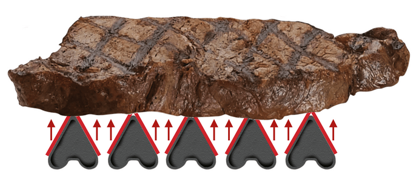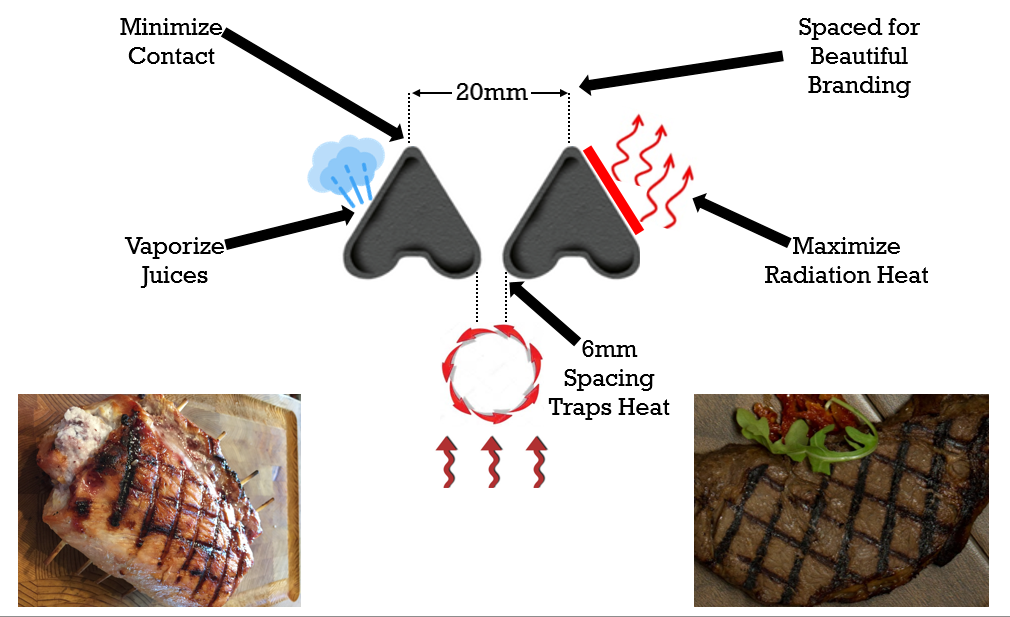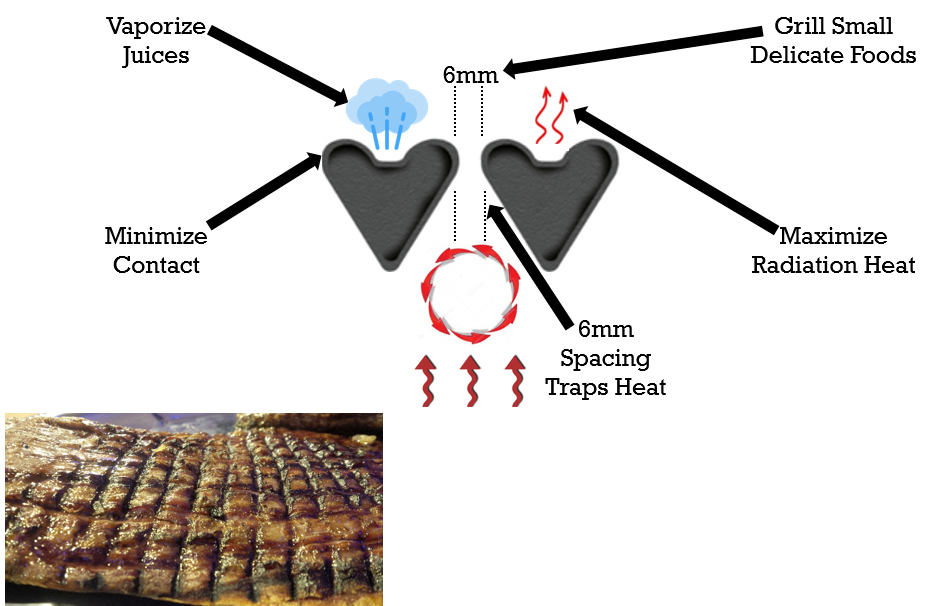We have so many ways to cook foods: on the stove, in the oven, microwave, grill, smoker, or over a toasty campfire! Some appliances use technologies like induction and forced convection or pressure to achieve great results. It can all be quite confusing, but the important thing to understand is that all cooking is simply the transfer of heat energy — from a heat source into your food.
Understanding these forms of heat transfer – conduction, convection and radiation – can help you understand how your grill works to cook food. A better understanding of how your grill works will help you master different grilling techniques – such as direct and indirect cooking.
Conduction
Conduction if the easiest form of energy transfer to understand. Inside your grill, heat energy radiates from the heat source (the burners) to a solid metal mass (your cooking surface) such as a pot, pan, or cooking grid. These metal masses absorb that heat energy and temporarily hold onto it, charging much like a battery. When you sear or sautee, that energy transfers from the cooking surface to your food through direct contact. This concept is why a sear mark is generally black but the area around it is golden brown or grey.
Conduction is the most direct and intense transfer of energy but it only happens through direct contact so it has no effect on any material that isn’t making contact. It’s why your BBQ and most pans come with a lid to keep in the heat. Conductive heat can really add to the appearance of your food but it’s no match for…

Radiation
We’re not talking Chernobyl here! Think back to your high school science class when you learned about the wavelength continuum on the Electromagnetic spectrum. Right, of course, you do… Here’s the short-short short version… All matter that has a temperature greater than absolute zero emits some form of energy. An igneous rock would emit very little while everything that we perceive as dangerous and radioactive would emit a lot. Cooking utilizes radiant energy that lives just outside of the visible light spectrum.
In other words, the heat we cook with we can’t see. While an open flame is visible all of the heat beyond it is an invisible wave. None of our food is cooked directly in that propane or natural gas flame, it’s too hot to use, around 1900-2000°C (3452-3632°F), which is about 7 times hotter than you need for a steak. Think about your microwave, no visible fire, no magic, plenty of cooking energy to cook an entire meal.
The energy that radiates from that flame (your burners) is what we cook with and it extends from its source in a bubble that weakens the farther you travel from the source. We love radiant energy when we see videos of a ribeye searing on an infrared side burner from the direct heat emanating from the burner surface less than two inches from the steak, mmmmm. Then we hate radiant energy when our pizza burns on the bottom but is still cold on top.
Control your radiant heat by cutting back the intensity of the source or move your food farther away and out of its searing reach. Use radiant heat to cook the perfect chicken wings inside and out. Remember your grill lid isn’t just there to redirect some radiant energy, its main purpose is convective grilling. Also, that’s right energy is bouncing off of the lid of the grill back down to your food.

Convection
Convective cooking is best visualized in a pot of boiling water. Water closest to the heat source boils which causes it to rise displacing the cooler water above, that water cycles down it then heats, rises, and cycles. We can see the convective current in the water; visualize that current in your grill since the moist air inside is governed by the same laws. Hot moist air that was heated from the radiant energy of your grill rises but it can’t escape so it effectively floats to the top only to be replaced by new hot air that pushes the cooler air back down, over, and over in cycle. This is natural convection and it’s what you see in a gas grill.
A convection oven forces this process to speed up cooking but quickly circulating air to basically eliminate cooling, the entire oven is set to your target temperature bombarding your food with even roasting. A sealed system like a Dutch oven in your stove works much the same way since moisture can only escape slowly. A pressure cooker goes one step further yet since it allows you to push water past its natural boiling point to cook your food that much faster. We could go on, but not today.
Convection is the reason that a roasted item cooks evenly since all of the air around it is hot and cycling constantly. All low and slow cooking is the best representation of convection but a gas grill cooking indirect with a water pan works well too.

When To Use Each Type Of Grilling
If you’re following a recipe, it will specify temperature and whether to use direct or indirect grilling. But if you’re just throwing some grub on the grill, it’s good to know the best method to achieve the results you want.
Here are some general guidelines:
Direct (conduction or radiation) grilling is for food that cooks rather quickly. You can start food on high to get a sear, and then turn the burner down to finish cooking the food without burning it. Vegetables, burgers, hot dogs, chicken breasts and thighs, can be cooked over direct heat. Anything you cook in a pan directly above a heat source is also direct grilling.
Indirect (convection) cooking is for food that takes longer to cook. You may start the food over direct heat or on an infrared burner to quickly sear it, but then you would move the food above a burner that is off. Large cuts of meat, rotisserie meat, baked potatoes, and casseroles, can be cooked using indirect heat. Smoking food is also a form of indirect grilling, as the gas (air) is circulated around the food with the addition of wood smoke to flavour the food.
Go Forth PhGriller and Sear-Science with Confidence!
If you’re ready to upgrade or add to your grill collection, shop the entire line at BroilKingBBQ.com.
